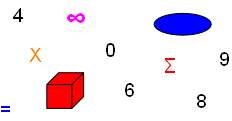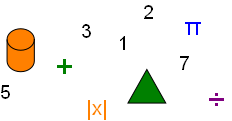



Factoring for Algebra and Beyond


For many of us the mathematical definition of factors and factoring is confusing, complex or difficult. Whatever the reason for this, factors and factoring are actually easy to learn and to develop a math proficiency.
Factoring techniques and methods are very, very important. These techniques and methods must be understood to solve advanced mathematics problems.
“Factors are any of the quantities which form a product when multiplied together.”
If you were asked to multiply 3, 4 and 2 the answer is 24.
3, 4 and 2 are each factors of 24, and 24 is the product, the multiplication result.
“Factoring is a math process that applies valid operations and quantities so that when multiplied together form an expression equal another quantity. While an expression can appear similar or different from the original quantity, to be correct it must be mathematically equivalent.”
If you were asked to Factor Integers 3, 4 and x, the value of x would need to be provided to solve the problem. But, if you were told to factor 3, 4 and x and this equals 24:
(3) (4) (x) = 24
12x = 24
(12 / 12) x = 24 / 12
x = 2
(3) (4) (2) = 24
3, 4 and x are each quantities. When the value of x is 2 the multiplication equates to the quantity 24 and forms an expression of the quantity 24. In the same way, we can say 24 is an expression of multiplying 3, 4 and x when x is 2.
Prime Numbers serve as atoms of Integers. By multiplying Primes you can obtain all positive numbers except 1.
A Prime Factorization of an integer is an expression of the integer as a product of its Primes. Thus, 3 multiplied by 5 is a Prime Factorization of 15 and 2 multiplied by 5, multiplied by 7 is a Prime Factorization of 70.
Fundamental Theorem of Arithmetic:
Except for the order of the factors, there is exactly one Prime Factorization of a Composite. The prime factorization of a prime “p” is “p” (itself).
In Algebra we usually deal with numerals (such as 6, 4, −5) and letters (such as y, x, a, m). When we have one or more numerals or letters it is an Algebraic Expression. Six examples of Algebraic Expressions are:
13x
5
n
4y − 3
2x2 − 4x + 8
ax + by + c
Some of the expressions have a plus or minus sign. Each numeral, letter or combination of numerals and letters by themselves or separated by a plus or minus sign is a Math Term. Any letter of a Term is often called a Literal Factor and if a Term has both numeral and letter the numeral is a Term Coefficient. If a Term does not contain any letters, only numerals, it is a Constant Term.
When a Term is a combination of letters and numbers together, like 13x, it means that the quantity 13 is multiplied by the quantity x.
The multiplication of a Term having more than one letter or number is always assumed; multiplication signs are not written between letters and numerals of a Term. We can not know the value of the Term unless we are given or determine value(s) for the letter(s) in that Math Term.
Monomial - An Algebraic Expression with one nonzero Term: 24y is Monomial.
Binomial - The sum of two dissimilar monomials is a Binomial: 6y + 2x is Binomial.
3y − y is not Binomial, the terms are similar, can be summed: 3y − y = 2y.
Trinomial - The sum of three dissimilar monomials is a Trinomial: x − y + z is Trinomial.
Multinomial - An Algebraic Expression with more than one Term: 6xy − 3y + 4 is Multinomial.
Polynomials - All Polynomials are a specific type of Multinomial where Factoring is applied to solve a math problem:
9x2 − 16y2 is a Polynomial that can be Factored.
Copyright © DigitMath.com
All Rights Reserved.